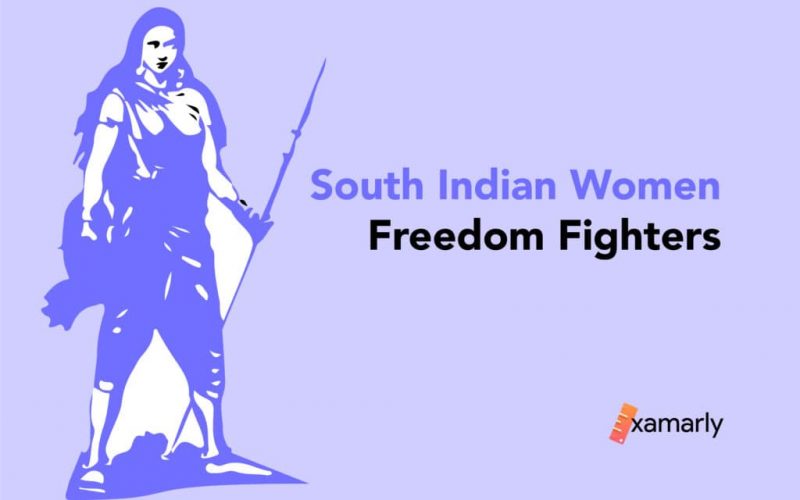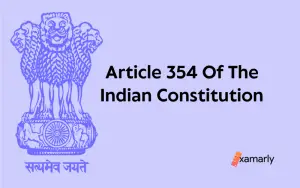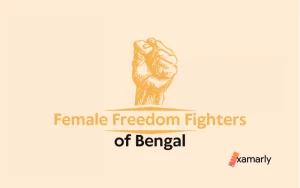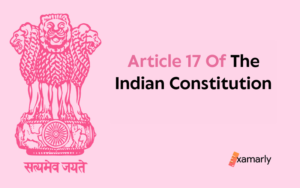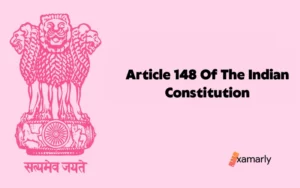The Indian freedom struggle came to fruition with the amalgamated efforts of its men and women. Both equally shouldered the responsibility of freeing the motherland from the shackles of colonial rule.
Thousands of Indian women dedicated their lives to the struggle for freedom. The fight of the Indian independence movement is an inspiring story of women’s valor and strength. There are various unsung women freedom fighters whom India should never forget. They were the embodiment of patriotisxm.
This article will shed light on some courageous South Indian Women Freedom Fighters
South Indian Women Freedom Fighters From Andhra Pradesh
In Andhra Pradesh, women freedom fighters were often underestimated. But the truth is that these women made a huge contribution to the nation. Let us get to know a few of them.
Ponaka Kanakamma
- Ponaka Kanakamma ( June 10, 1892- September 15, 1963) served society as a social worker, activist, and freedom fighter.
- Born in the Nellore district to wealthy landlords, she renounced her luxury to join the Indian freedom struggle.
- Despite having no official education, she managed to become proficient in Telugu, Hindi, and Sanskrit on her own.
- She was an ardent follower of Mahatma Gandhi.
- She established Sri Kasturidevi Vidyalayam, a school advocating education for girls in her district. She also worked for the betterment of the Harijans and the poor.
- She founded the “Sujana Ranjani Samajam” and “Vivekananda Granthalayam” near Nellore to spread the light of education among the village folks.
- She actively participated in the Salt Satyagraha and the non-cooperation movement. She was even imprisoned twice for involvement in these movements.
Durgabai Deshmukh
- Durgabai Deshmukh ( July 15, 1909- May 9, 1981) is known for her contributions as a freedom fighter, social worker, lawyer, and politician.
- She laid the foundation for the Andhra Mahila Sabha in 1937 and served as the founder chairperson of the Central Social Welfare Board.
- She proved her mettle and tenacity as a leader by becoming a member of the Constituent Assembly of India as well as the Planning Commission of India.
- She dropped out of school at the age of 12 in protest over the imposition of English-medium schooling. In Rajamundry, she founded the Balika Hindi Paathshala to encourage Hindi education for females.
- She was a Mahatma Gandhi supporter during India’s battle for independence from the British Raj. During the Civil Disobedience Movement, she was a notable social reformer who took part in Gandhi’s Salt Satyagraha actions.
- She played an indispensable role in organizing the movement’s female satyagrahis. As a result, between 1930 and 1933, British Raj officials imprisoned her three times.
- She was also the first to emphasize the importance of establishing separate Family Courts after visiting China in 1953.
- Durgabai received the Padma Vibhushan award from the Government of India and the UNESCO award for outstanding work in the field of literacy. She was also conferred with the honorary title of “Mother of Social Work in India” in recognition of her significant contributions to the education of girls and disadvantaged children.
You Might Also Like – Women Freedom Fighters Of India
Sangam Lakshmi Bai
- Sangam Lakshmi Bai was born at Ghatkesar in Hyderabad State on July 27, 1911.
- She was a renowned social worker and Parliamentarian. She worked as a dedicated social and public worker before taking the fight to the British.
- She had to face imprisonment for a year during 1930-1931 for her involvement in the Salt Satyagraha.
- She founded some orphanages, maternity homes, a high school, etc. in Hyderabad. She served as the honorary secretary. Some of these were Indira Seva Sadan (Orphanage), Radhika Maternity Home, Vasu Shishu Vihar, and Masetti Hanumanthu Gupta High School.
- In 1952, Bai was chosen as a part of the Hyderabad State Legislative Assembly. She served as the Government of Andhra Pradesh’s Deputy Minister of Education from February 1954 until October 1956.
- As a member of the Indian National Congress, she was elected to the 2nd, 3rd, and 4th Lok Sabha in 1957, 1962, and 1967 respectively.
- She passed away in 1979 at the age of 69.
Chodagam Ammanna Raja
- Chodagam Ammanna Raja or C. Ammanna Raja (June 6, 1909- February 22, 1999) was a popular Indian freedom movement activist from the state of Andhra Pradesh.
- She also served as a Rajya Sabha member from her state.
- With the backing of Sarojini Naidu and Durgabai Deshmukh, she was elected to the Madras Legislative Assembly as a member of the Indian National Congress from the Eluru constituency in 1937.
- Chodagam Ammanna Raja joined Mahatma Gandhi in the Satyagraha campaign in 1940.
- Between 1946 and 1952, she served as Deputy Speaker of the Madras Legislative Assembly. She battled alongside Dr. Muthulakshmi Reddy for the passage of a bill eliminating the Devadasi system in 1947.
- She withdrew from politics in 1968 and campaigned tirelessly for women’s rights. She educated countless youngsters who would otherwise have been compelled to work at an early age.
South Indian Women Freedom Fighters From Telangana
From this State of India, let us learn about women freedom fighters, Mallu Swarajyam, Arutla Kamla Devi, and Rani Rudrama, and their contribution to the Indian freedom movement.
Mallu Swarajyam
- Mallu Swarajyam was born to a feudal family based in Karvirala Kothagudem in the year 1931.
- She is known as a popular Indian woman politician from the Communist Party of India (Marxist). She was also a freedom fighter.
- She participated in the Telangana struggle by becoming a member of the armed dalam. Later on, she became the commander of the fight against the Zamindars.
- She had started uniting people to raise their voices against Nizam’s Razakars at the tender age of 10.
- Having occupied a prominent position in the Communist Party of India, she worked for the upliftment of local peasants.
- She not only served the people of her area but the entire State by being twice elected to the Legislative Assembly from the Thungaturthi constituency on the CPI ticket in 1978 and 1983.
Related – Mapping the role of South-Indian women warriors during India’s freedom struggle
Arutla Kamala Devi
- An important leader and activist in the Telangana Armed Rebellion was Arutla Kamala Devi who was born in the year 1920.
- She was a pioneer and the movement’s leader, together with her partner Arutla Ramachandra Reddy.
- She was a politician and freedom fighter. She also served as the leader of the Communist Party of India.
- Arutla Kamala Devi was aware of the tyrannical government in place in Hyderabad and opposed it. She joined the Andhra Mahasabha, a Communist Party ally.
- She was arrested and imprisoned for her participation in the oppressive Nizam’s independence campaign.
- Arutla Kamala Devi was elected to the Hyderabad Legislative Assembly in 1952. She remained a member till 1967.
- She is widely known as the first-ever woman opposition leader in the Telangana State Assembly and India as well.
- She passed away on January 1, 2001.
Rani Rudrama
- Rani Rudrama, the first Hindu woman ruler of the region, is an important example in the history of women freedom fighters.
- She was also known by the name of Rudrama Devi or Maharani Rudrama Devi.
- She was a ruler of the Kakatiya dynasty and her reign lasted from 1263 to 1289 (or 1295) until her death.
- Being a female ruler owning a high position did not sit down well with aristocrats, other rulers, and even her relations. Attacks on her kingdom became common. Rani Rudrama handled these with incredible bravado and crushed the foes with her ferocious abilities.
- She fought for her kingdom against Chola and Yadav kings.
- Rudrama was killed in battle. The exact date of her death remains ambiguous. Some believe her to have lived till 1289 while others believe it to be 1295.
- Her achievements have been cherished and respected across the Southern part of the state.
Famous Women Freedom Fighters From Karnataka
Some of the most courageous women from Karnataka who fought against British Forces include Kittur Rani Chennamma, Kamaladevi Chattopadhyay, and Abbakka Chowta. Their contribution to India’s freedom struggle is as significant as that of other women freedom fighters like Jhansi Ki Rani Lakshmi Bai.
Read on to discover more about these remarkable women whose contribution to India’s freedom struggle is unparalleled.
Kittur Rani Chennamma
- The first lady to advocate for Indian freedom was Rani Chennamma. She was the valiant queen of Kittur who faced the British Empire alone.
- Chennamma was born in the village of Kakati on October 23, 1778.
- She was skilled in horse riding, sword fighting, and archery as she received the necessary training right from an early age.
- In violation of the Doctrine of Lapse, she organized an armed revolt against the British East India Company in 1824 in an attempt to preserve power over her kingdom. She beat the Company in the first insurrection but perished as a prisoner of war in the second on February 21, 1829.
- Although Kittur Rani Chennamma was unable to crumble British rule, she left a lasting mark on the pages of Indian history. She is recognized as a folk hero in Karnataka as one of the first and few female monarchs to command rebel armies against British domination.
Kamaladevi Chattopadhyay
- Kamaladevi Chattopadhyay was an Indian social reformer and proponent of independence who lived from April 3, 1903, to October 29, 1988.
- She was mostly known for her contributions to the Indian independence struggle, as the driving force behind the resurrection of Indian handicrafts, handlooms, and theatre in independent India, and for raising the socioeconomic status of Indian women through pioneering cooperation within the field of handloom.
- She was the first lady in India to run for election from the Madras Constituency, though she lost she paved the way for women in India.
- She had a great interest in the arts. She starred in movies at a time when it was believed that women from respectable families do not indulge in activities such as acting.
- In 1923, Kamaladevi learned about Mahatma Gandhi’s Non-Cooperation Movement. She returned to India from London to join the Seva Dal, a Gandhian organization dedicated to social upliftment. Eventually, she was made the head of the Dal’s women’s division, where she was active in recruiting, training, and organizing girls and women of all ages from throughout India to become voluntary workers, also known as ‘sevikas.’
- She was a founding member and the first Organizing Secretary of the All-India Women’s Conference (AIWC). She established the All India Handicrafts Board and the National School of Drama. Along with being a member of UNESCO, she was also appointed as the head of the Sangeet Natal Akademi.
- She was a member of the seven-person lead team proclaimed by Mahatma Gandhi and one of the two women besides Avantikabai Gokhale in the famous Salt Satyagraha of 1930. This initiative was to produce salt at the Bombay seashore.
- In 1955, the Government of India awarded her the Padma Bhushan, and in 1987, the Padma Vibhushan. Besides these, she has several other laurels to her name.
Abbakka Chowta
- Rani Abbakka was the first woman in history to have faced, combated, and repeatedly defeated the Portuguese.
- Rani Abbakka Chowta was the Queen of Ullal to fight and was a member of the Chowta dynasty, which reigned over sections of coastal Karnataka.
- Before being crowned as the queen, she was a headstrong princess who was skilled in aspects of warfare and military strategy.
- She separated from her husband after a brief marriage. This urged him to seek revenge against her. He did so by joining hands with the enemy, the Portuguese.
- Time and again, she resisted the Portuguese attempt to capture her kingdom. She did not yield to the dominating power and managed to hold her own by repulsing these attacks.
- Unfortunately, Abbakka Chowta died as a prisoner of war due to her husband’s treachery.
- The legend of the queen has been passed down from generation to generation. Yakshagana, a famous folk theatre in Coastal Karnataka, and various older folk songs depict the heroism of this great woman.
- Her unwavering bravery and unbreakable spirit are on par with that of the great Rani Laxmi Bai of Jhansi and Rani Chennamma of Kittur. Due to her courage, she earned the title Abhaya Rani which translates to the fearless queen.
Women Freedom Fighters From Kerala
There are many women freedom fighters from Kerala who have made their mark in the history of the state. Accamma Cheriyan, A.V. Kuttimalu Amma, Lakshmi N Menon, and Mrinalini Sarabhai are a few among them. They braved the atrocities of not only the colonialists but the society as well. Read on to learn about these great personalities.
Accamma Cheriyan
- A shining figure in the history of Kerela, independence activist Accamma Cherian was born on February 14, 1909, in a Christian household.
- She was addressed by the sobriquet “Jhansi Rani of Travancore”.
- The contemporary socio-political situation of her time inspired her to become a freedom fighter and she sacrificed her career as a teacher.
- To lift the State Congress’s injunction, Accamma Cherian organized a large demonstration. The rally began from Thampanoor to Maharaja Chithira Thirunal Balarama Varma’s Kowdiar Palace.
- In October 1938, Accamma was given the responsibility of organizing a female volunteer group, the Desasevika Sangh.
- She underwent imprisonment for her involvement in the formation and violation of the National Service Committee.
- She went on to become a member of the State Congress after being released from prison and took charge as its Acting President in 1942.
- Accamma Cheriyan, one of the most prominent women freedom fighters from Kerala passed away on May 5, 1982.
A.V. Kuttimalu Amma
- A.V. Kuttimalu Amma was born on April 23, 1905. She was a renowned women freedom fighter, social worker, and politician.
- She was an active member of the Civil Disobedience movement, an activist in the Indian National Congress, and a promoter of Khadi.
- For her involvement in the civil disobedience movement, Kuttimalu Amma was imprisoned along with her two-month-old child.
- In 1936, she was elected as a member of the Madras Assembly. Her life was full of struggles and she was again imprisoned for participating in the Quit India Movement in 1942.
- She was an active member of the All India Congress Committee and the Congress Working Committee.
- She was a Hindi Pracharika. She presided over the Hindi Prachar Sabha.
- She never retired from public life and continued her work in the state after independence. She breathed her last on April 14, 1985.
Lakshmi N Menon
- One of the most successful Malayali women in Indian politics was Lakshmi N Menon. She was also a freedom fighter.
- Her father, Rama Varma Thampan, was an eminent reformer in Kerala. Born in Trivandrum on March 27, 1899, she married an educationist, V K Nandana Menon.
- Lakshmi Menon became the president of the AIWC (All India Women’s Conference).
- The advancement of women’s positions was a priority for Lakshmi N. Menon, who served as chairperson of several United Nations Commissions.
- She served in the Rajya Sabha from 1952 to 1966. From 1952 to 1957, she worked for the Ministry of External Affairs as the parliamentary secretary. From 1957 to 1962, she was the deputy minister and then the minister of state.
- In 1957, she was honored with the Padma Bhushan. She was the second person from her state to receive it.
- Lakshmi Menon, a women freedom fighter from Kerala passed away on November 30, 1994.
Mrinalini Sarabhai
- Born on May 11, 1918, Mrinalini Sarabhai was a member of an illustrious family of freedom fighters.
- She was a renowned Indian classical dancer, choreographer, and instructor. She was married to Vikram Sarabhai, the father of India’s space program.
- She has won many laurels for herself and the nation in the field of classical dance.
- Sarabhai used the art form of dance as a medium of activism. She incorporated social themes into her dance styles and used the stage to raise awareness of societal issues such as dowry deaths, rape, discrimination of Adivasi women, environmental causes, etc.
- She was a proud recipient of national civilian honors such as the Padma Bhushan in 1992 and the Padma Shri in 1965.
- At the age of 97, Mrinalini Sarabhai left for the heavenly abode on January 20, 2016.
- This Indian classical dancer was commemorated on her 100th birthday by being represented on Google’s Doodle.
Women Freedom Fighters From Tamil Nadu
Rani Velu Nachiyar, S. Ambujammal, Kamala Ramasamy, and Govindammal are among the Tamil Nadu women freedom fighters who made significant contributions to the cause of equality and justice. Let us take a look at their lives individually.
Rani Velu Nachiyar
- Rani Velu Nachiyar (January 3, 1730 – December 25, 1796) was the Sivaganga estate’s queen who reigned from 1780 to 1790.
- She is credited as the first Indian queen to undertake a war in India against the East India Company.
- Rani Velu Nachiyar is still held in high esteem in Tamil Nadu, where she is known as Veeramangai and which translates to a brave woman.
- Nachiyar was proficient in combat methods and handling weaponry. She was in horse riding, archery, and martial art forms such as Valari, Silambam, etc. She was well-versed in French, English, and Urdu.
- To defeat the East India Company, it took Nachiyar eight years of planning and she sought help from Tipu Sultan, the Marudhu brothers, Thandavarayan Pillai, and many feudal lords.
- She took charge of her husband’s kingdom. She ruled over it for more than a decade.
- To commemorate her achievements, a postage stamp in her honor was released. This was done on December 31, 2008.
S. Ambujammal
- Born in Chennai on January 8, 1899, Ambujammal was a freedom and women’s rights activist.
- She was a follower of Gandhi due to his ideas which fascinated her. She participated in the Civil Disobedience Movement. She headed the Tamil Nadu Congress Committee as its Vice-President.
- Gandhiji’s social and economic programs were implemented into a non-political wing of the Congress called the Women’s Swadeshi League. Ambujammal was nominated as the Treasurer of this League in 1929.
- She strongly supported Khadi and encouraged the use of domestic goods. She was a devoted supporter of Swadeshi.
- From 1939 to 1942, she took the position of Secretary in the Women’s India Association (WIA). In addition to that, she also served as the Treasurer from 1939 to 1947. This initiative was taken to eradicate social evils such as child marriage, polygamy, Devadasi system, and demand legislation for the protection of the rights of women and their property.
- She founded an institute by the name of Srinivasa Gandhi Nilayam and served as its President and Treasurer from 1948. This endeavor helped poor girls to receive free coaching, looked after the training and hiring of women to work in its printing press, and even had a free dispensary.
- She was a part of the Non-Cooperation Movement. Due to this, she had to face imprisonment twice in 1932 for six months.
- Ambujammal was a scholar in Hindi and Tamil languages. She authored three books in Tamil based on Gandhi.
- She was honored with the Padma Shri in 1964.
Kamala Ramasamy
- Kamala Ramasamy was a known freedom fighter from Tamil Nadu, who fought for the independence of India and participated in the Trichy Quit India movement. She was active in the communist movement and worked with women and students.
- She was married to Ramsamy. Her husband was the grandson of freedom fighter TSS Rajan.
- Kamala Ramasamy was fascinated by the principles of CPI leader K Baladhandayutham. She quickly became a part of the Trichy Quit India campaign and took part in the nationwide student strike that same year.
- Only four women, including Kamala, were noted in the book as having participated in the general strike.
- In 1946, Kamala received a year in prison for her participation in the South Indian Railway agitation. She spent practically that entire year behind bars.
- She received another jail sentence in January 1947 as a result of the Indian Defense Act. She was the sole woman imprisoned in India during that time.
- Kamala Ramasamy breathed her last on June 9, 2019. She was aged 93 at that time.
Govindammal
- Govindammal was a nationalist in the truest sense. Along with her husband, Kovai Khadar Ayyamuthu, she publicized the spinning of khadi.
- She supported her husband in all his pursuits. She was an active participant in the country’s freedom struggle. She once took part in a movement in his place only to be sent to jail.
- She fearlessly took up the responsibility of battling the untouchability that was prevalent in society. She stood by her husband’s side like a shield in their fight for India’s independence.
Conclusion
Women’s activism and sacrifice were vital to India’s fight for independence and need to be held sacred. But they are often forgotten.
Among many other Indian freedom fighters, women have played an important role in the Indian struggle for independence. They opened a new chapter in the history of the national movement. Being no ordinary women, these personalities energetically participated in the freedom fight of India in unprecedented ways, and we must never forget their contributions. Their dauntless spirit is unparalleled and indescribable. The women covered in this article are a living example of this.


